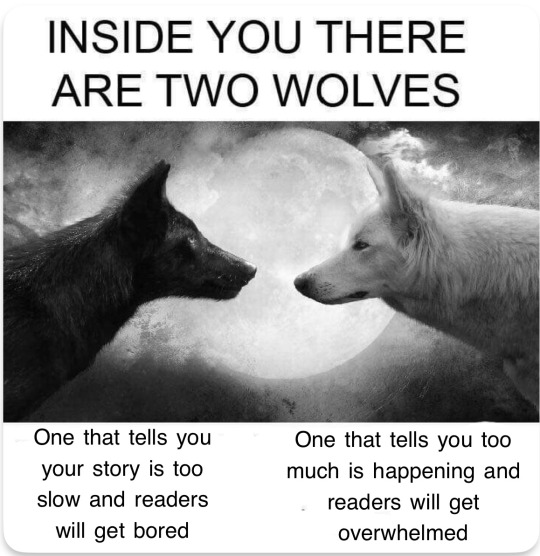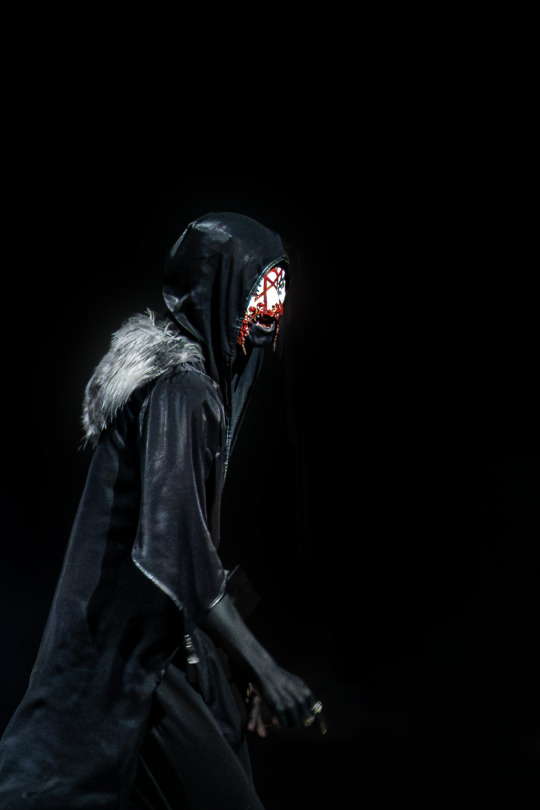#Editing process
Explore tagged Tumblr posts
Text

The current state of my WIP
#novel#novel writing#writeblr#books#fantasy#my writing#wip#writers block#writing#writing motivation#writing stuff#writing things#writing a novel#writing memes#two wolves#pacing#writers#writer stuff#writer problems#self editing#editing#editing process
256 notes
·
View notes
Text
Why are modern printers like this? I'm trying to print a hard copy of the story I'm working on and the printer is making me complete the damn 12 labors of Hercules to prove myself worthy of my hard copy
#teach me to like editing a hardcopy#writing#writeblr#writer problems#writing humor#writers on tumblr#writing community#writing struggles#writer life#creative writing#writer things#writing motivation#on writing#writerblr#writer thoughts#fiction writing#writer struggles#writer woes#writing woes#writing process#editing#editing process#printer#hercules#12 labors of hercules#labors of hercules
91 notes
·
View notes
Note

I personally know there are multiple types of editing but I've never seen anyone explain it in a way that actually made me understand what the types of editing actually were (yeah cool that you say {}editing is different from []editing but *how*). So if you wanna explain, feel free to.
Your handy-dandy guide to different types of editing
disclaimer: writers, you can literally edit however works for you. these distinction can be useful to your process, or just if you're looking to hire an editor. Not all editors make distinctions in this way; there are various ways of dividing. But no matter what vocabulary you use, it's best practice to start with broad, big-picture stuff and move towards narrower issues. Some editors do all levels of editing, while some specialize.
Developmental Editing (Is it a good story?)
Developmental editing has to do with the content. For a novel, that means working on the bones of the story. The plot. The pacing. The characters. Do their motivations make sense? Can the reader understand why things are happening? Does the story drag in places, or seem to brush past important elements? Do all of the subplots get resolved? etc. etc. (At this stage an editor is mostly going to be offering suggestions, pointing out issues, and throwing out potential solutions. Beta readers can also be very helpful at this stage to get a reader's perspective on the story beats and characters.)
Line Editing (is it well written?)
Sometimes called substantive editing, line editing is zooming in a little bit more to focus on scenes, paragraphs and sentences. Once we've decided that a scene is going to stay, lets look at the mechanics of how it plays out. Does the scene start to early or too late? Does the writing style communicate the emotions we want the reader to feel? Does the dialogue match the characters' voices? do any of the sentences sound awkward or ugly? Is the movement being bogged down by too much purple prose anywhere, or is there not enough detail? (This can get pretty subjective, so it's important that the writer and the editor are on the same page with taste, style goals, etc.)
Copy Editing (is is correct?)
Copy editing is all about the details. Think grammar and punctuation. Do the sentences make sense? are they grammatically correct? Is the dialogue punctuated correctly? Any misspellings? Should this be hyphenated? Should this be capitalized? Should we use a numeral, or write out the number? etc etc. A significant part of copy editing is matching everything to a style manual (like Chicago or AP) a house style guide (individualized preferences from a publisher, for example), and a project's own internal style sheet (are the character's names spelled the same every time? if we used "leaped" in chapter 4, we shouldn't use "leapt" in chapter 7) Copy editing is still subjective, but less so than the earlier levels, so a copyeditor will be more likely to just go in and make a bunch of (tracked!) changes without consulting the author for everything.
Bonus: Proofreading (did the copyeditor catch everything? are there typos? formatting issues? have any errors been introduced?)
Lots of people say editing when they really mean proofreading. Proofreading is the absolute last thing to get done. It's the one last pass just before something is published. It's important, but as you can see, there's a whole lot more to editing than just checking for typos.
#editing#writeblr#editing process#writing process#editors or writers who have worked with editors feel free to chime in! we are not a monolith lol this is just they way I've learned
1K notes
·
View notes
Text
Beta Reader Checklist! (Suggestions)
Beta reading is highly, highly subjective, so take this whole post with a massive grain of salt. IMO, in short, more feedback is always safer than less feedback, unless the author states otherwise.
Like, if they ask you to do a final read through for any lingering issues, you can speed-read your way through the manuscript for general vibes and enjoyability. If this is the first round of edits and beta reads, the more you can give them, even if you think you're over-reaching, the better.
Thank you to all my betas thus far, absolutely no shade meant with this post. Everybody's got different expectations. This is meant to help anyone who's unsure about the task before them.
So I'm going to use some snippets from my seasoned beta reader's feedback from my upcoming novella for the variety of commentary you can give.
Positive vibes/reader reaction


Even if the manuscript is a hot mess, sending back a beta read with 0 good things to say is going to demoralize the author. Even if all you can say is "this is a cool concept that can benefit from a better execution," letting the author know that they've written something salvagable helps, especially if you can do it in the first few paragraphs.
Grammar and Syntax

You are not a line editor and should not be expected to line edit someone's first draft (and this beta got the ~7th draft). However, if you do see something while reading, there's no reason that you can't leave a suggestion.
Fun commentary


We authors like to know that the reader is connecting with the story. These comments tells me absolutely nothing helpful about bettering the manuscript, but they're human responses from a human reader and it's just nice to see. Beta readers are casual, you should be allowed to stay stuff like this.
Developmental edits

Beta readers generally come before the big expensive editor (if you ever hire one at all) which means the goal is more big picture, developmental commentary over splitting hairs about punctuation. This comment got me to add about half a paragraph's worth of extra narrative to expand upon, because I liked the suggestion.
Continuity and reader comprehension


This novella happens to be about a niche subject that not every layman reader will understand, so I have to find the line between overexplaining to those who know, and underexplaining to those who don't, without reading like a textbook. The top line I ended up leaving as I didn't think the risk of confusion was worth the added technical detail. The bottom line was a continuity error that I did have to fix.
Repetition and style

I'm an author who will always look for ways to lower my word count. Sometimes cutting a random line is better for the narrative than doubling down and trying to justify it with extra details. In this case, I over-used a motif, and happily saved myself 7 words.
Potential for extra detail

If you struggle with lengthening your word count, you can ask your betas to focus on where the narrative is thin and can benefit for more immersion and backstory. This beta leaves me comments everywhere suggesting places for extra sensory details, as I write very lean narratives with little fluff, and my consistency with sensory details varies widely.
All told, over 21k words of story, this beta left me exactly 100 comments, and a couple quick line edits within the text itself. It shows me, at the very least, that she was engaged with the story. The only time she doesn't leave me comments is when a scene is so intense that she forgets to make one.
The Reader Report



The reader report is a separate document from the manuscript copy that compiles and condenses the beta's thoughts into a much shorter format so the author doesn't have to scroll up and down constantly for a big picture takeaway. It also expands upon any commentary the beta had, but didn't want to put in a single tag within the narrative and is typically written after most of the manuscript has been read for overall thoughts.
This beta in particular knows what I like, which is breaking down the report by chapter (or parts in this case). The only thing missing from her delivery is a final conclusion that will answer the three big questions:
Did she like it?
Would she buy it?
Would she recommend it?
But it was also done in a rush and in her email she said I made her cry so I count that as a yes for all 3.
—
I did not implement every suggestion from her, but I did acknowledge where other readers might feel the same and weighed the pros of trying to satisfy everything vs maintaining my clear vision.
The benefit of the beta process, if you work with multiple betas, is having more than one reader's opinion, and why I don't think anyone should pay ridiculous fees for a developmental editor. My betas all had different opinions on this manuscript, and I can treat their feedback like a scatterplot, deciding on revisions with an average throughline.
At the end of the day, you write for yourself, not to please any one beta reader. They're suggestions, not rules, and even if your beta tells you they hate it, you at least learn who your target audience isn't, and what naysayers wouldn't like.
#writing#writeblr#writing a book#writing advice#writing resources#writing tools#writing tips#beta reading#how to#editing#editing process#editing advice#indie publishing#fanfiction
77 notes
·
View notes
Text
I love the notes I gave myself during my first draft. I think one of my favorites is: we need to standardize pet names.
#random editing thoughts i guess#editing process#creative writing#writer problems#writing community#writer#writing#ao3 writer#adhd writer#black writers#autistic writer
68 notes
·
View notes
Text

107 notes
·
View notes
Text
Let's talk photo editing!
How I took this photo to this photo:


First step is cropping. III is blurry and the mic stand & the Espera are distracting, so we'll crop them out. One of the biggest tips I’ve ever received as a concert photographer is to never be afraid of cropping!


Next, we edit. For this picture, I want to darken the background, add saturation to Vess's mask to make it pop, and generally increase the contrast while making the photo crisp and clear.
Overall edits: Exposure -0.49; Contrast +13; Highlights -1; Shadows +29; Whites +6; Blacks -15; Texture +16; Clarity +1; Sharpening +89.
I personally don't like to keep background tech in the photos if I can help it, so I use a combination of Lightroom and Photoshop to patch/clone/fill/heal (and/or paint over) the lights, IV's mic stand, and white lines on the stage:

Now that Vess looks like he's in some mysterious bathypelagic ocean depth, I need to add some interest back to the background. I love dust overlays, so here I add one of my favorites and play with the blend modes - for this one I used Pin Light.

It adds a weird texture to his mask and cloak, so I select Vess and copy him onto a new layer above the overlay.
And that's it! You can see the final photo posted here in all its glory.
#hecetasphoto#concert photography#editing#photoshop#photoshop process#editing process#metal photography#sleep token#vessel#vessel sleep token
67 notes
·
View notes
Text
I would like to report that apparently ignoring the book for two months before coming back to edit is a good thing actually. Can't even begin to explain how much clunk, redundancy, and just plain poor writing I've managed to find and fix up. I've always said I'm proud of my work after finishing a draft, but this time? I think I'm finally ready to release it into the wild.
I mean after one more pass to make sure I didn't screw it all up with these changes.
#writing#author#lgbtq#editing#editing process#editing problems#book stuff#booklr#writing problems#fiction#writer#lgbtqia
76 notes
·
View notes
Text
The Dreaded Task of Editing: Tips and Insights
If you are a writer and have finished your first draft, congratulations! However, the work has just begun. Now comes the tedious task of editing. Editing is one of the most dreaded tasks a writer can have because it is the process that truly determines if your story will be successful or not. Most people may think it is as simple as making sure there are no grammar errors or wording issues, but editing is far more complex.
The Editing Process
1. First Read-Through: Focus on grammar, wording, and any glaring issues that need to be fixed.
2. Second Read-Through: Ensure the story makes sense and flows logically.
3. Third Read-Through: Delete scenes that don't fit the story or add value.
4. Additional Read-Throughs: You may decide to change a few things, which is what makes editing so tedious.
For those who can afford editors, this process is cut in half. But for those who can't, this can be enough to make you set the book aside for a while until you've had a break.
Making Your Story Engaging
Always remember, when you're editing, make sure the story is engaging. If you're not interested in the story, you can't expect others to be. During this time, it's important to seek feedback to make the story as good as possible before you publish your book or send it to a publisher to enhance your chances of success.
Personal Experience
I personally hate the editing process because it's hard to stay focused on it. That's why I use AI to help me analyze my draft and give me feedback. I then use that information to go back through my draft to make necessary changes and delete what’s necessary. Remember, even your favorite movies have scenes cut to make the story more engaging and to stay on point.
What challenges do you face when editing? Let me know in the comments!
#writing community#amwriting#editing tips#writing advice#author life#creative writing#writers on tumblr#editing process#writingjourney#writing inspiration#writing motivation#improveyourwriting#writers life#writing skills#drafttofinal
22 notes
·
View notes
Note
Can I ask how to edit your images, I mean use blender, the game case or something like that? They are great and by the way if the question bothers you just ignore it <3


No bother at all!
I actually answered a similar question here and since then (around March this year, I think), I’ve started editing my in-game screenshots a bit more in Photoshop. I’ve been focusing on learning about lighting so I’m adding light and shadows by painting them over my screenshots 🖌️
My process usually involves:
Taking screenshots in-game 📸
⤷ often mixing and matching poses to create the composition I envision
⤷ which most of the time means cutting different poses together ✂️
⤷ For my Pokémon edits for example I take screenshots of each asset and piece them together in Photoshop
Then I adjust the colors (Photoshop)
Round the edges (Photoshop)
And add light and shadows (Photoshop)
This whole process takes a lot of time and when I factor in the creation of a new Sim for an edit it can easily take 15-20 hours of work 🥲
43 notes
·
View notes
Text
Sticking To A Writing Routine

Welcome. Today, I will show you how hard it is to stay on track with writing and the ways to overcome it. Here at home, I will currently express that I haven't written in a long time.
The trouble with that is that I really want to, and despite that, I am not writing. I have a hard time sticking to writing a little bit every day because I am worried about how I will finish my work and the work it takes to do my writing and then edit it.
People have different reasons why they procrastinate writing. For all of us, it doesn't mean we enjoy writing. We are just afraid of failure in some way. For example, for me it is the process of editing and how much work it is going to take. My brain tells me that I will never finish the editing process because it takes so much time. I want to do things that will take very little time.
The story I am working on is about an alien that joins his people's plans on wanting to invade planet Earth, but the alien doesn't want to partake in this mission, and meanwhile on Earth, a girl and her friend are desperate to meet a live alien. This is a novel that took me three years to write when I was a little girl. I have written the entire thing on paper and now I need to type it on the computer.
It is important to keep yourself accountable for getting the work done. I am on camera because I want to show you that it is possible to come and stay on track in the writing process if you really let yourself do this. There are different ways to hold you accountable. You just gotta pick the types that work for you because everyone is different.
-Make a schedule and stick to it -Make a goal and stick to it -Make a checklist and work on it for a duration of time -Make a sign in, sign out sheet -Set a goal for the day -Get someone else to keep you accountable -Dedicate a day for your tasks
What works for every single person is different, so it is important you find what works for you, whether it is something from this list or something you come up with on your own. What works for me is this (when I am disciplined): Setting a goal and using a day to accomplish it. Let me tell you how I found this. I was roaming through YouTube one day when I found an interview with Stephen King on there. I clicked on it because the title said he was talking about how he was making books so fast. He went into the conversation to mention that he sets the goal of writing SIX PAGES a day and then having the entire day to accomplish this. He also mentions that when he is being overcome with obstacles in writing, then he will use that time to take breaks, and what he does in those breaks is either eat a meal, shop at the door for things he needs or do a chore. He uses his breaks to do something he needs to get some practice in his personal life instead of being distracted by the phone and TV, which is really important to getting anything done. It is like being at school at home. Sometimes it makes it easier to think of it as an assignment he needs to get done. All these little things work as a motivator for him while he is working. Then he will start over the next day until he reaches his day(s) off.
This was inspiring to me because everyone else always came up with ideas that didn't work for me, such as the list above. For me, working under a time limit didn't work because I didn't know what to expect to come in randomly in my life. Others are able to work under pressure… It all depends on who you are and that you pick what works for you. As long as you pick something that is realistic to you, then you are on your way.
The last thing that you need to remember is that you need to start with small goals and just write! before you set yourself up with bigger goals and worry about editing, or else you will never get anything done because you are overwhelming yourself. We will overthink everything and then end up messing up our own stories.
#creative writing#writing#writing tips#writing techniques#writing life#authors#writing routine#books#writing process#editing process#writing blog#sharon forester#author sharon forester#writeblr#writers on tumblr#writing community#writer#writerscommunity
33 notes
·
View notes
Text
I'm at the stage of editing where it feels like I'm making sure my characters are behaving. I feel like a parent and my kids are home for the holidays and one of them is crying in the corner, two are tackling each other in the hallway, and the other one is tugging at my shirt telling me they are bored for the billionth time.
#this is all very overwhelming#novel#novel writing#writeblr#books#fantasy#my writing#wip#writers block#writing motivation#writing#writer things#writerblr#characters#editing process
25 notes
·
View notes
Text






The editing process is a huge part of photography!
It can take the whole day to sort through the hundreds of pics and edit my favorites. I wanted to share some originals next to their edits to showcase how different they can look when I'm done with them!
#original photography#photography#nature photography#wildlife photography#original photos#photographers on tumblr#bird photography#birds#mountains#nature#editing#editing process#edit#goldfinch#lesser goldfinch
17 notes
·
View notes
Text
next fic will be husband jk x wife reader. domestic stuff. wife has an eldest daughter syndrome aka miss-want-everything-to-be-perfect while husband Jungkook is the chill, laid back, relaxed. he is the youngest son syndrome in a body
9 notes
·
View notes
Text
Writers, I need your opinions:
My story is like focused on two characters, and I have this scene where we switch between their perspectives. They are texting each other throughout an evening essentially, and we switch each time someone reads a text.
I don’t know if I should keep it or not. I love it, but I don’t know if it’s confusing or not. The overlapping scenes are very important for the development of both plot and story.
Also, I do have a beta reader but I lowkey have a crush on them so I’m too embarrassed to send the fic to them until I’ve done a couple rounds of self edits, and I don’t wanna get too far in just to realize it doesn’t work
#I need writing advice#writing help#writing problems#editing process#creative writing#writing community#writer#autistic writer#writing#ao3 writer#adhd writer#black writers#writer problems#question for writers
37 notes
·
View notes
Text
I'm editing storyquest recordings for my project, and I see that...


Darko literally ✨SHINES✨
4 notes
·
View notes